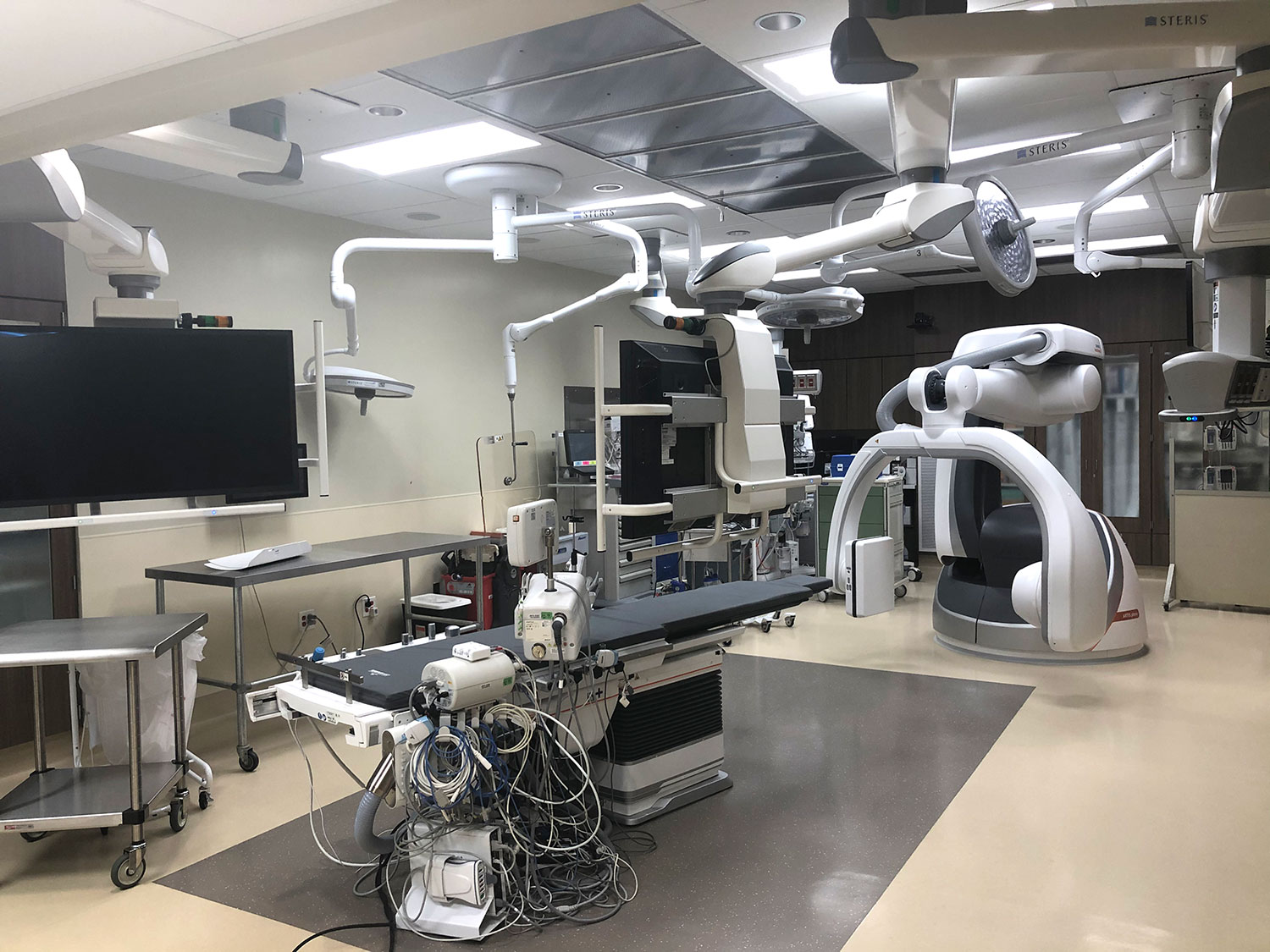Complete Power Conditioning and Outage Protection with Multi-Modality UPS System
Though applying a single UPS System for a single modality might be applicable in some instances, a Central UPS for multi-vendor and multi-modality imaging applications makes more sense for most installations.
If the project is driven by the lowest up-front cost, then a smaller UPS to support a single modality will always provide the lowest up-front cost. In some cases, there is only one modality that requires protection. Providing a smaller UPS to support one modality makes sense when only one modality requires protection.
The Central UPS approach does require long-term vision.
The Central UPS approach takes advantage of the tremendous diversity of load with imaging modalities. Diversity of load allows additional modalities to be supported by a smaller Central UPS System compared to adding up the kVA of single modality UPS Systems. The National Electric Code (NEC) speaks to diversity of load in diagnostic imaging applications when sizing electrical distribution. Examples of Central UPS include a 300 kVA UPS to support 4-5 suites or a 500 kVA UPS to support 10-12 Suites.
The quantity of suites protected by a given UPS size depends on the type of modalities being supported and the peak current and time duration of those peaks.
The potential for coincidence also needs to be considered. Taking this Central UPS approach will assure the lowest Total Cost of Ownership (TCO). It is always easier to apply a Central UPS in a new facility. From day one, the electrical design can account for the Central UPS space and distribution requirements. With that said, 50-60% of CPN Power installations are in existing facilities with existing electrical distribution. Electrical distribution, in an existing facility, ultimately plays into the application of a Central UPS. Are all of the imaging suites fed from one distribution panel? Are the imaging suites fed from many different distribution panels? Are those distribution panels in close proximity to each other? These factors play into the install cost and the overall project cost. In some cases, existing distribution might increase the cost of re-wiring to an unacceptable level.
The Central UPS approach typically allows room to add future imaging suites and/or upgrades to existing imaging suites.
This approach offers dramatic cost savings compared to installing many individual UPS Systems vs. one Central UPS System. There are many long-term cost benefits to the Central UPS approach. Sometimes Central UPS might actually be (2) UPS Systems in different areas of the hospital or on different floors of the hospital. Sometimes this approach is preferred to offer redundancy. The electrical distribution might be far less expensive by applying (2) UPS Systems in a healthcare facility. If there are (4) CT Scanners, as one example, (2) CT Scanners might be placed onto UPS 1 and the other (2) CT Scanners might be placed onto UPS 2. Other imaging loads would also be dispersed evenly between the (2) UPS Systems.
Benefits of Central UPS vs Many Individual UPS Systems
- Lower initial cost of power protection equipment and installation
- Reduced floor space requirements of power protection equipment
- Lower cost of air conditioning equipment and installation
- Lower cost of power protection equipment maintenance
- Lower medical equipment service costs due to complete protection from all power problems
- Lower cost of operation due to much higher energy efficiency
- Lower cost of battery replacement
- System sizing can allow for future modalities
- Protection is offered to the entire suite, not just partial protection of Fluoro mode or the CT table/gantry
Power Protection has emerged as a “MUST HAVE” requirement for Diagnostic Imaging
- The high cost of medical equipment justifies the level of protection
- Short-term outages can result in longer-than-acceptable equipment downtime
- New applications are more sensitive to voltage sags, power outages, and other power anomalies
- Potential liability associated with power failures during invasive procedures
- National power grids are becoming less reliable due to de-regulation and an aging infrastructure
- Summertime brownouts and electrical power grid switching create long-term nuisance medical equipment problems
- Power problems can adversely affect image quality
- Installing power protection ensures that – “Power disturbances will no longer be the basis of a service issue.”
- Monthly generator testing impacts medical equipment reliability
- Multi-Modality & Multi-Vendor power protection is available and affordable
- Improved equipment operation, less patient re-scheduling, and fewer service issues guarantee increased revenue
CPN Power can assist with:
- Proper sizing of the UPS System
- Electrical and mechanical design conversations
- Accounting for future expansion, equipment changes or gradient upgrades
- Backup protection from VRLA batteries, Lithium Ion Batteries, or Flywheels
- Maintenance options and costing

Request A Brochure
CPN Power is a nationally recognized company that designs and applies Central UPS and power conditioners for Multi-Modality and Multi-Vendor medical equipment applications.
We invite you to contact us for detailed information, to request a brochure, or to review an application.
